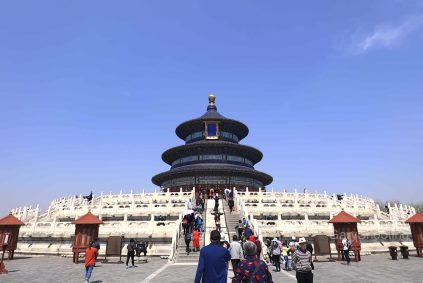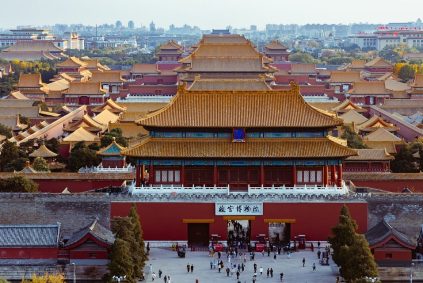The Essence of Guangzhou Cuisine: A Symphony of Sauces and Seasonings
Guangzhou’s culinary identity is inseparable from its bold, nuanced use of sauces and seasonings. From humble street stalls to Michelin-starred restaurants, the city’s chefs rely on a carefully curated arsenal of ingredients to elevate dishes from ordinary to extraordinary. This tradition reflects both historical trade influences and local agricultural bounty, creating a flavor profile that is at once complex and comforting.
Soy Sauce: The Soul of Cantonese Cooking
In Guangzhou, soy sauce—or jou yau—transcends mere seasoning. It is the cornerstone of countless dishes, from steamed fish to crispy-skinned roast goose. Unlike the thick, sweet soy sauces of other regions, Cantonese soy sauce tends to be lighter and more umami-forward, with a delicate balance of saltiness and sweetness. Chefs often blend multiple types, including light soy for depth and dark soy for color, to create layered flavors. Even the simplest bowl of rice noodles gains complexity when doused in a fragrant, house-made soy-based sauce.
The Art of Secret Sauces
Every Guangzhou kitchen guards its sauce recipes fiercely. A classic example is the sauce for lo mai gai (sticky rice in lotus leaves), which combines soy sauce, oyster sauce, and five-spice powder for a savory-sweet punch. Similarly, char siu (barbecued pork) owes its glossy sheen and caramelized edges to a marinade of soy sauce, honey, and fermented bean paste. These mixtures are rarely standardized, with each cook adjusting ratios to suit personal taste or seasonal ingredients.
Oyster Sauce: The Umami Bomb
Originating in Guangdong province, oyster sauce is a staple in Guangzhou’s pantries. Made by simmering oysters until they release a rich, briny liquid, this sauce adds depth to stir-fries, braises, and even vegetarian dishes. Its versatility lies in its ability to enhance without overpowering; a spoonful can transform bland tofu into a centerpiece dish. Many households use it in choy sum (flowering Chinese cabbage) stir-fries, where its earthy notes complement the greens’ mild bitterness.
From Tradition to Innovation
While oyster sauce remains rooted in tradition, modern chefs experiment with variations. Some infuse it with dried shiitake mushrooms for extra complexity, while others mix it with citrus zest to brighten seafood dishes. These adaptations showcase the sauce’s adaptability, proving that even centuries-old ingredients can evolve with the times.
Fermented Bean Paste: The Pungent Powerhouse
Fermented bean paste, or dou ban jiang, is a double-edged sword in Guangzhou’s culinary arsenal. Its intense, slightly funky aroma can be polarizing, but when used judiciously, it adds unparalleled richness to dishes. A small spoonful is often stirred into lo shui (braising liquid) for pork belly, creating a sauce that is simultaneously sweet, salty, and savory. It also forms the base of ma la-style sauces (though less spicy than Sichuan versions), where its fermented tang balances chili heat.
Regional Variations
Guangzhou’s proximity to Hong Kong and Macau has influenced its use of fermented bean paste. Some chefs incorporate dried shrimp or scallops into the paste, creating a umami-laden condiment perfect for seafood dishes. Others blend it with palm sugar and tamarind for a sweet-sour glaze used on grilled meats, showcasing the ingredient’s versatility.
Sugar: The Subtle Sweetener
Unlike the bold sweetness of Shanghai cuisine, Guangzhou’s use of sugar is restrained yet intentional. It appears in marinades for siu mei (roasted meats), where it caramelizes to form a crackling crust, and in sauces for dim sum, balancing soy and oyster flavors. Even savory dishes like stewed beef brisket rely on a touch of rock sugar to mellow tannins and enhance meatiness.
The Role of Palm Sugar
In rural areas surrounding Guangzhou, palm sugar is preferred for its caramel-like depth. Used in dishes like lei cha (pounded tea), a savory porridge-like dish, it adds complexity without overwhelming other ingredients. This local sweetener also appears in tong sui (sweet soups), where its molasses-like notes complement red beans or black sesame paste.
Herbs and Spices: The Finishing Touches
While not as prominent as sauces, herbs and spices play crucial roles in Guangzhou’s flavor profiles. Fresh ginger and garlic are ubiquitous, adding pungency to stir-fries and marinades. Star anise and cinnamon appear in braises, their warmth counterbalancing soy’s saltiness. Even Western herbs like rosemary have found their way into modern fusion dishes, though traditionalists still favor native ingredients like ng heung (galangal) in soups.
The Magic of Five-Spice Powder
No discussion of Guangzhou’s spices would be complete without five-spice powder. This blend of star anise, cloves, cinnamon, Sichuan pepper, and fennel seeds adds a mysterious complexity to everything from roast duck to mooncakes. Its ability to elevate simple ingredients makes it a pantry essential, embodying the city’s philosophy of balancing flavors.
















